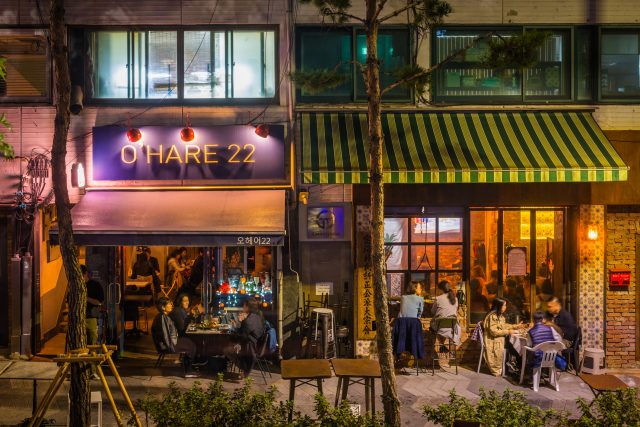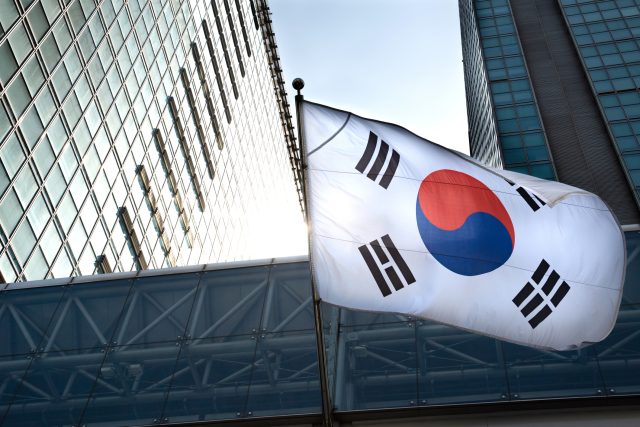This website uses cookies so that we can provide you with the best user experience possible. Cookie information is stored in your browser and performs functions such as recognising you when you return to our website and helping our team to understand which sections of the website you find most interesting and useful.
South Korea still wine suffers crippling 25% drop in 2023
A sharp drop in consumption for still and sparkling wine in South Korea begs the question: should exporters start to look elsewhere?

South Korea’s potential as the next hot ticket for wine has stalled. Consumption of still wines in the country was down by a quarter in 2023, having already dropped by 10% the previous year, market data from IWSR has revealed.
Sparkling wine consumption saw positive growth in 2022, surging 21%, but the gains were wiped out with a 16% loss in 2023.
The sharp downturn is in stark contrast to the wider trend in South Korea’s wine market; between 2016 and 2021, sparkling wine volumes more than doubled. The country’s still wine market in 2021 and 2022 was more than twice what it was in 2008.
South Korea has in recent years been pegged as a key growth market, particularly for producers entering the Asian market.
Chilean, French, and Italian wines have driven much of the growth in consumption among South Korean consumers. In July, Korean consumers were ranked fourth among 20 major global markets for monthly splurge purchasing, with the majority of spending centred around premium alcoholic beverages, a Deloitte report found.
The report showed that such conspicuous consumption in the food and beverage sector is about three to four times higher compared to spending on household items. Korean consumers are spending a significant amount more (US$59) on average each month on luxury items and experiences than the average over all 20 markets ( US$41).
However, this positive trend has not been reflected in wine consumption. IWSR data shows that after the volume declines of 2023, the country’s wine market is now only 50% bigger than it was in 2008.
Still wine
Jonathan Ho, market analyst, IWSR, said of the findings: “Still wine’s post-pandemic decline continued in South Korea for a second year in 2023, with red, white and rosé all falling by between 15 and 30%.”
Ho chalked this up to price increases and a saturated market. “Home consumption is the largest driver of volumes in the country, but this declined in frequency, resulting in lower overall consumption,” he explained.
Strict lockdowns during the pandemic were a key driver of consumption. South Korea’s government relaxed ecommerce laws in mid-2020, which led to one in five South Korean wine drinkers placing orders online for click-and-collect (“Smart Order”).
When stay-at-home regulations were eased in 2022, wine volumes were heavily impacted.
“There are reported to be elevated inventory levels sitting in warehouses during the second quarter of 2024,” said Ho. “Retailers are aggressively promoting in order to clear stock. Many wine regions, including Australia, have been looking to South Korea as an important emerging market, so this will have been a shock to many companies.”
Sparkling wine
The trajectory for sparkling wines has been less consistent. Champagne has bucked the downward trend, with volumes rising 10% in 2023, according to IWSR market data.
This has gone some way to offset the 21% decline for other sparkling wines, including Cava and Prosecco, amid high prices.
“The modern on-trade in South Korea has brought a surge in popularity for Champagne,” Ho said. “High margins enable both the night-time entertainment operators and the brand owners to make significant investments in promotions. As consumers seek to flaunt their wealth when they go out, demand has noticeably increased.”

Master of Wine Jeannie Cho Lee hosted a session at Vinexpo Hong Kong in May detailing the latest trends and opportunities in the Korean wine space. She argued that potential lies in the premium wine sector.
Ted Ko, founder of Town Wine and and export manager of Prime Cellar, gave his insights during the session. His advice to brand owners: “If you are a newcomer who wants to penetrate the Korean market, you have more chances in the bulk wine section or luxury iconic wines because only those two sectors show stable consumption right at this moment.”
According to IWSR, South Korean wine drinkers also have a positive outlook despite the country’s current economic woes.
Almost a third (30%) of wine drinkers report consuming more wine than they did last year. LDA Gen Z and Millennials dominate here, making up 63% of those drinking more.
younger adult consumers are going out more and buying more expensive wine. Up-trading was the most common reason given for this change. As a result, consumers report higher spending across occasions since 2019, although high inflation and rising costs in the past few years have played a part in this.
“Many consumers are interested in experimenting with wine, which is perceived as a sophisticated and fashionable,” says Ho.
Related news
A 'challenging yet surprising' vintage for Centre-Loire in 2024

